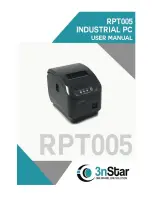
I N S TA L L AT I O N , O P ER AT I O N S A N D M A I N T EN A N C E M A N UA L
5
—
01
—
01
Removing the
switchboard from
the skids
The switchboard should remain bolted to the
shipping skids until it is placed in its final position.
If the switchboard is fitted with lifting hooks (see
Figure 2), an overhead crane or hoist may be used.
Construction rollers on a flat, stable surface or
a forklift truck may also be used to move the
switchboard into position. Make sure to confirm
that all lifting and handling equipment capacities
are sufficient to support the weight of the
switchboard. Also, ensure that the forklift tines
extend beyond the depth of the switchboard and a
belt is used to secure the switchboard to the
forklift, as it may be top heavy. (See Figure 4)
Remove the switchboard from the skids when
placing it in the installation location. To remove
the switchboard from the skid, first remove the
shipping bolts, then carefully slide the equipment
so the rear is off the skid and resting on the floor,
as shown in Figure 1. Tilt the entire equipment
slightly to the rear to release the skid. Be careful
when sliding and tilting the switchboard; due to its
height and weight, the equipment can become top
heavy if tilted too far. Slide the switchboard into
place by pushing on its frame. Blow out any dust or
loose particles of packing material that may have
collected on the device parts. Remove all protective
blocking on relays, devices, or circuit breakers, as
well as any temporary shipping supports.
Receiving
Prior to shipment, the ReliaGear SB switchboard
is given a final inspection and packaged using
precautions to minimize the possibility of shipping
damage. The switchboard may be divided into
sections and shipped on multiple skids. Upon
receiving the switchboard, remove all packaging
and check the packing list against the equipment
received to validate a complete shipment.
Additionally, all equipment should be thoroughly
inspected for any damage sustained in transit. If
damage is noted or if indication of rough handling
is visible, file a claim for damage with the carrier
immediately. Information about damaged parts,
including the part number, case number, and
purchase order number, should accompany
the claim.
Regarding claims for damaged shipments,
shortages, or incorrect material, the following is
an excerpt from the published Supplemental Terms
and Conditions of Sale for products of ABB: “Title
and risk of loss shall pass upon delivery of the
products to the carrier at the f.o.b. point and
invoices shall be payable without deduction
for losses in shipment. It is the Purchaser’s
responsibility to file claims with the carrier for
loss or damage in transit. “Claims for shortages
or incorrect material must be made in writing
within 30 days after receipt of the shipment by
the Purchaser, and the failure to give the Company
such written notice within the 30-day period shall
be unqualified acceptance of the products and a
waiver by the Purchaser of all claims for shortages
or incorrect material.”
Handling
Caution:
Use extreme care in handling.
The switchboard may be top-heavy.
Pre-installation
Remove
Remove
DANGER
WARNING
CAUTION
NOTICE
SAFETY
INSTRUCTIONS
Summary of Contents for ABB ReliaGear SB
Page 1: ...INSTALLATION OPER ATIONS AND MAINTENANCE MANUAL ReliaGear SB Switchboards ...
Page 2: ......
Page 30: ...30 RELIAGEAR SB SWITCHBOARDS ...
Page 31: ......






































